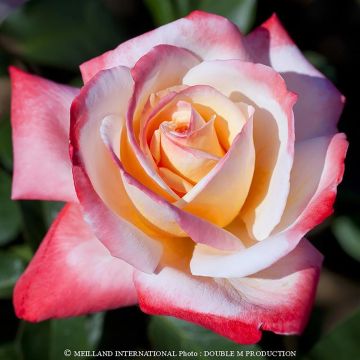

Rosa Astrid Grafin von Hardenberg


Rosa Astrid Grafin von Hardenberg


Rosa Astrid Grafin von Hardenberg


Rosa Astrid Grafin von Hardenberg


Rosa Astrid Grafin von Hardenberg
Rosa Astrid Grafin von Hardenberg
Rosa Astrid Grafin von Hardenberg
Rose
This item cannot be shipped to the selected country
Delivery charge from €5.90
Delivery charge from €5.90
Delivery to Corse prohibited
More information
Schedule delivery date,
and select date in basket
This plant carries a 24 months recovery warranty
More information
We guarantee the quality of our plants for a full growing cycle, and will replace at our expense any plant that fails to recover under normal climatic and planting conditions.
From €5.90 for pickup delivery and €6.90 for home delivery
Express home delivery from €8.90.
From €5.90 for pickup delivery and €6.90 for home delivery
Express home delivery from €8.90.
Delivery to Corse prohibited: UE law prohibits the import of this plant from mainland France to Corse as part of the fight against Xylella fastidiosa. Please accept our sincere apologies.
More information
Does this plant fit my garden?
Set up your Plantfit profile →
Description
The 'Astrid Gräfin von Hardenberg' Rose, marketed in English-speaking countries under the rather prosaic name of 'Black Caviar', also bears the evocative name of 'Nuit de Chine', reserved for the European market. Voluptuous, in two tones of velvety red, its roses are structured in the old-fashioned way, with tightly packed quarters, heavy with petals that carry a powerful scent of dark rose with peppery notes. They bloom in sumptuous bouquets, relentlessly from June to October, on a well-branched, robust and hardy bush, whose disease resistance is commendable.
The 'Astrid Gräfin von Hardenberg' rose, from the Nostalgie series, belongs to the group of modern tea hybrids, which means that it is the result of a cross between a floribunda rose, with clustered flowers, and an "old-fashioned" hybrid tea rose. These two categories of roses have passed on their unique qualities to their offspring. It is a creation of the German rose breeder Rosen Tantau, dating back to 2001. This remarkably fragrant variety received the gold medal for the most fragrant rose in Rome in 2002.
This is a vigorous shrub with a bushy and upright habit, which reaches a height of about 1.30 m (4ft) and a spread of 90 cm (35in) at maturity in just a few years. It produces strong, thorny and well-branched stems, which bear very elegant foliage, purple and shiny when budding, then dark green and disease-resistant if the growing conditions are adequate. The stems can retain some leaves long after the first frost, giving it semi-evergreen foliage. Throughout the summer and into late season, if faded flowers are removed, the plant continuously produces beautiful 10 cm (4in) diameter flowers, well doubled, composed of over 40 petals arranged in quarters. Their slightly turbinate and quite free form somewhat resembles that of old roses. They have a velvety burgundy red colour on the periphery, and open up to a tight heart of a lighter colour, in carmine red. Gathered in small bouquets, they bloom at the end of long shoots from the current year or emerge on 2-year-old stems.
'Nuit de Chine' is simply an enchanting rose that speaks to all our senses. Showcase it as a standalone or planted in groups of 3 subjects not far from the house or near the terrace, even in a small garden, to enjoy its exceptional fragrance. It adapts to all our regions, as long as we take care of it. It is incomparable for giving a theatrical touch to flower beds, and its classic flowers go well with more pastel roses, in shades of mauve like those of 'Blue Girl', 'Sissi' or the white corollas of the English rose 'Winchester Cathedral'. It is an ideal companion for flowering shrubs (mock oranges, lilacs, hibiscus) and perennials such as bellflowers, catmints and foxgloves, to which it adds a fascinating charm. And then its flowers, animated by a burning passion, make bouquets worthy of being offered to a loved one.
Report an error about the product description
Plant habit
Flowering
Foliage
Botanical data
Rosa
Astrid Grafin von Hardenberg
Rosaceae
Rose
Cultivar or hybrid
Rosa canina Laxa (4L/5L pot, Wrapped bare root)
Other Large-flower tea Roses
Planting and care
Plant your 'Astrid Gräfin von Hardenberg' Rose in a sunny location. Roses prefer loose, permeable, and rich soils. They prefer a consistent, slightly acidic, neutral, or slightly alkaline soil, but will adapt to any garden as long as the soil is well cultivated and sufficiently rich. To plant your rose in a pot, work the soil to a depth of 25 cm3, crumble the soil well, and place an amendment at the bottom of the planting hole, such as dried blood or dehydrated horn. Water generously after planting to remove air pockets. Also, water regularly for a few weeks to facilitate root growth. Remember to provide your rose with special rose fertiliser to stimulate flowering.
Pruning hybrid tea roses is essential for flowering. In spring, shorten the branches to two or three buds above the ground level, choosing an outward-facing bud for a more elegant habit. Take advantage of this pruning to remove dead wood and unsightly branches. Pruning should be done at an angle above a bud. As the flowers bloom, remove faded flowers to encourage the development of new buds.
Planting period
Intended location
Care
-
, onOrder confirmed
Reply from on Promesse de fleurs
Haven't found what you were looking for?
Hardiness is the lowest winter temperature a plant can endure without suffering serious damage or even dying. However, hardiness is affected by location (a sheltered area, such as a patio), protection (winter cover) and soil type (hardiness is improved by well-drained soil).

Photo Sharing Terms & Conditions
In order to encourage gardeners to interact and share their experiences, Promesse de fleurs offers various media enabling content to be uploaded onto its Site - in particular via the ‘Photo sharing’ module.
The User agrees to refrain from:
- Posting any content that is illegal, prejudicial, insulting, racist, inciteful to hatred, revisionist, contrary to public decency, that infringes on privacy or on the privacy rights of third parties, in particular the publicity rights of persons and goods, intellectual property rights, or the right to privacy.
- Submitting content on behalf of a third party;
- Impersonate the identity of a third party and/or publish any personal information about a third party;
In general, the User undertakes to refrain from any unethical behaviour.
All Content (in particular text, comments, files, images, photos, videos, creative works, etc.), which may be subject to property or intellectual property rights, image or other private rights, shall remain the property of the User, subject to the limited rights granted by the terms of the licence granted by Promesse de fleurs as stated below. Users are at liberty to publish or not to publish such Content on the Site, notably via the ‘Photo Sharing’ facility, and accept that this Content shall be made public and freely accessible, notably on the Internet.
Users further acknowledge, undertake to have ,and guarantee that they hold all necessary rights and permissions to publish such material on the Site, in particular with regard to the legislation in force pertaining to any privacy, property, intellectual property, image, or contractual rights, or rights of any other nature. By publishing such Content on the Site, Users acknowledge accepting full liability as publishers of the Content within the meaning of the law, and grant Promesse de fleurs, free of charge, an inclusive, worldwide licence for the said Content for the entire duration of its publication, including all reproduction, representation, up/downloading, displaying, performing, transmission, and storage rights.
Users also grant permission for their name to be linked to the Content and accept that this link may not always be made available.
By engaging in posting material, Users consent to their Content becoming automatically accessible on the Internet, in particular on other sites and/or blogs and/or web pages of the Promesse de fleurs site, including in particular social pages and the Promesse de fleurs catalogue.
Users may secure the removal of entrusted content free of charge by issuing a simple request via our contact form.
The flowering period indicated on our website applies to countries and regions located in USDA zone 8 (France, the United Kingdom, Ireland, the Netherlands, etc.)
It will vary according to where you live:
- In zones 9 to 10 (Italy, Spain, Greece, etc.), flowering will occur about 2 to 4 weeks earlier.
- In zones 6 to 7 (Germany, Poland, Slovenia, and lower mountainous regions), flowering will be delayed by 2 to 3 weeks.
- In zone 5 (Central Europe, Scandinavia), blooming will be delayed by 3 to 5 weeks.
In temperate climates, pruning of spring-flowering shrubs (forsythia, spireas, etc.) should be done just after flowering.
Pruning of summer-flowering shrubs (Indian Lilac, Perovskia, etc.) can be done in winter or spring.
In cold regions as well as with frost-sensitive plants, avoid pruning too early when severe frosts may still occur.
The planting period indicated on our website applies to countries and regions located in USDA zone 8 (France, United Kingdom, Ireland, Netherlands).
It will vary according to where you live:
- In Mediterranean zones (Marseille, Madrid, Milan, etc.), autumn and winter are the best planting periods.
- In continental zones (Strasbourg, Munich, Vienna, etc.), delay planting by 2 to 3 weeks in spring and bring it forward by 2 to 4 weeks in autumn.
- In mountainous regions (the Alps, Pyrenees, Carpathians, etc.), it is best to plant in late spring (May-June) or late summer (August-September).
The harvesting period indicated on our website applies to countries and regions in USDA zone 8 (France, England, Ireland, the Netherlands).
In colder areas (Scandinavia, Poland, Austria...) fruit and vegetable harvests are likely to be delayed by 3-4 weeks.
In warmer areas (Italy, Spain, Greece, etc.), harvesting will probably take place earlier, depending on weather conditions.
The sowing periods indicated on our website apply to countries and regions within USDA Zone 8 (France, UK, Ireland, Netherlands).
In colder areas (Scandinavia, Poland, Austria...), delay any outdoor sowing by 3-4 weeks, or sow under glass.
In warmer climes (Italy, Spain, Greece, etc.), bring outdoor sowing forward by a few weeks.










































